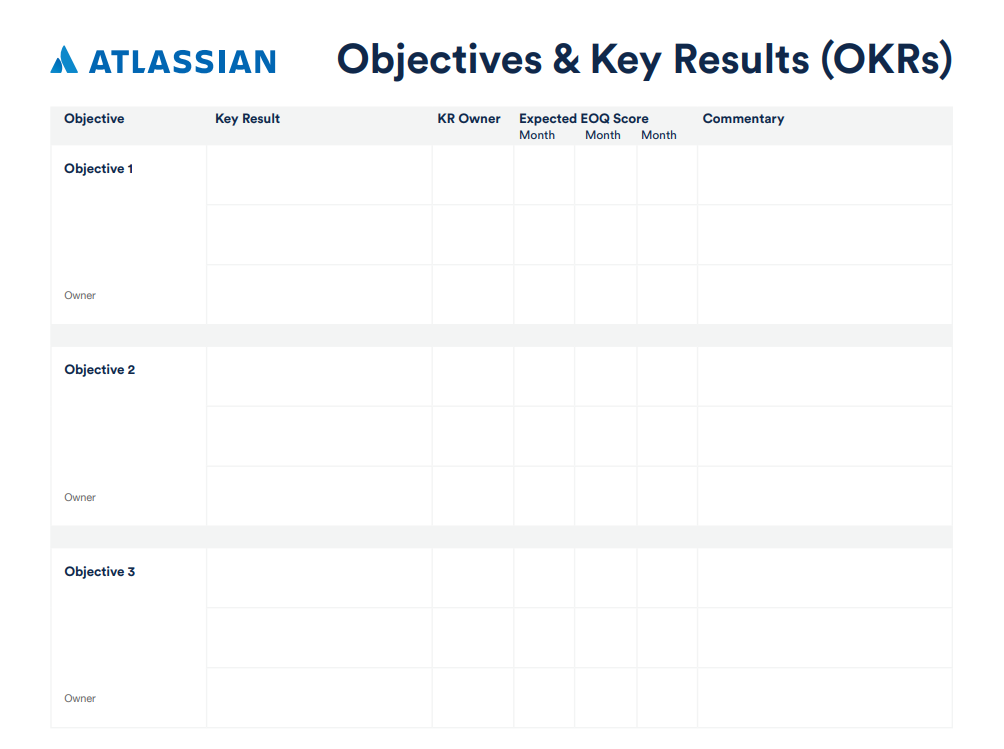Common Cents from Uncommon Teams (Part 3)
Managing a kickass, regional and multicultural team in Southeast Asia
What is your why?
In Part 1 of this series, I shared some tips on hiring and the qualities to look for, especially when you are an early stage company. Part 2 then highlights the common pitfall of throwing bodies at problems and how a measure of organizational planning goes some ways in mitigating over hiring. If you recall from Part 2, OKRs were embedded in the forward looking hiring framework. OKRs is a goal system used by Google and other large tech companies to create alignment and engagement around measurable goals. Many of us have probably hear of OKRs and there is also a bible on OKR out there written by John Doer.
In the final part of this series, I would share my own understanding of OKRs and how best to design and implement them in an early stage company. For me, OKRs are also iterative and it is more important to really nail down your “why” which defines the company’s reason of being.
What is your Company’s vision?
A few years ago, I asked someone within the leadership team of the company I was working for what was the Company’s vision. He referred me to the fluffy brand statement (ask me that offline and I will tell you) and I said,
No, that is not a company vision, that is the content team’s copy writing. Can anyone tell me why are we doing what we do everyday?
Naturally, I was not always the most popular person in the room poking around at the gaps across the various levels of the company. However, I was at an important crossroads in my career then. I had spent a year and a half abroad, took a significant pay cut to move myself out of Singapore into a fast growing emerging market. I perform a self review of my career at the end of every year and by the end of year 1, I found myself questioning if it is worthwhile for me to stay another 2 years in this company vs the opportunity cost of lost income. I felt my personal growth plateauing and the bulk of my time dedicated to greasing the cogs of a company which has outgrew its leadership.
To give further context, communication and transparency was not always the strong suit of the company. Perhaps due to some unpleasant experiences in their formative days, there was a heavy preference to limit the availability of information and major strategic decisions were made by a closed room of 6.

I started to question why I was spending day in and day out at the company as I could not visualize the destination nor the end game or next major milestone of where we were trying to go. Everyday felt like we were putting out fires and running on a hamster wheel of ever inflating acquisition targets (I was in growth marketing) to chase the next fund raise.
It very much felt like I was onboard a race car equipped with a Ferrari engine in a Toyota body, racing laps in circles around a F1 track, trying to clock shorter and shorter lap times.
That being said, I really enjoyed working with the brilliant group of intelligent and driven people around me but I was trying to look ahead. The company has managed to assemble a large group of highly talented people, yet we were struggling to keep the ship together.
And the reasons?
No vision, at least not communicated beyond the room of 6
No OKRs that cascade from the milestones which are derived from the company vision
No human capital management, employees are not valued, performance appraisal not tightly linked to company objectives
Vision, Objectives and Key Results (VOKRs)
Now, you can easily search for a free OKR template and be inundated with a slew of options. Many of them are missing the Vision and/ or Mission Statement at the top which seems minor but it helps to anchor the objectives that are set by the company.
I have pulled an example from Atlassian to illustrate.

However, notice that the company vision is missing from the template. It is a common omission as the company scales and “corporatizes”. The irony is that communication about company vision becomes more important as the company gets larger.
Vision vs North Star metric
Simply put, the company’s vision should describe in 1 succinct statement the raison d'être of the organization. Some familiar examples:
TED: Spread ideas
Disney: To make people happy
Nike: Bring inspiration and innovation to every athlete* in the world. (*If you have a body, you are an athlete.)
Airbnb: Belong anywhere
Some companies have insanely long vision statements but I find that the shorter ones usually have more “oomph” to it and also reflect the founders’ will and focus. Strive for simplicity while communicating an Inspiring Value that is Plausible and Specific.
Vision statements are not just alphabet soups, they help anchor the organization as they go about developing their North Star and OKRs. Without a clear vision, most companies would start arriving at OKRs that look more like glorified to do lists with a North Star as shallow as “Increase sales” or “Increase bookings”.
Of course every company wants to increase sales, it is the very basic presumption of starting a business. But the vision statement has to communicate what kind of value add you want to bring to the world that earns you that revenue.
Using Traveloka as an example, the vision statement could be as simple as
Democratizing travel to expand our users’ horizons and perspectives to foster a more connected Southeast Asia
and the North Star metric could be along the lines of
No. of active users that have used any of Traveloka’s services at least 6x a year
Cascading from the above North Star metric would be objectives such as:
Increase average number of services used by an active user
Increase supply competitiveness and coverage by leveraging our best in class B2B software
Providing hassle free post booking support
And the corresponding key results could be:
Increase average number of services (can be non revenue generating) used by an active user in any quarter to 3
Increase supply coverage of new product verticals to match 85% of largest market player and secure competitive supply prices with x% margin as way of monetizing value added by our B2B platforms
Increase productivity of our CS team by 50% (with support of ML and NLP), maintain 95% CSAT and 99% SLA
Wrapping it up
It seems pretty simple when it is all laid out in front of you. But trust me, coming up with a succinct vision statement is going to be most companies’ first stumble. However, do your very best not to gloss over the first step by getting copywriters to write a fluffy brand statement. A brand statement is a very different animal altogether and you will find it lacking clarity when crafting your North Star.
One tip I would share when checking if your North Star is truly one, try breaking down the North Star metrics into its constituent variables until you arrive at its base form.
Example:
Increase sales = Increase number of new users * Increase conversion * Increase retention * Increase AOV * Increase purchase frequency
Which one of the above variables are tied to your vision statement? In the Traveloka example above, it would be increase purchase frequency and retention alongside acquiring new users to achieve the vision of “democratizing travel'“.
As a parting note, I would like to quote the tips on crafting OKRs shared by Atlassian:
Put the customer first
Don’t skimp on ambition
Tie OKRs to larger company goals
Just enough Os and KRs is enough
If you can't measure it, it’s not a good KR
KRs are outcomes – not tasks
Assign KR owners
That brings us to the end of this Series, do sound out to me directly via email if you have any burning questions or wish to see any topics covered!



